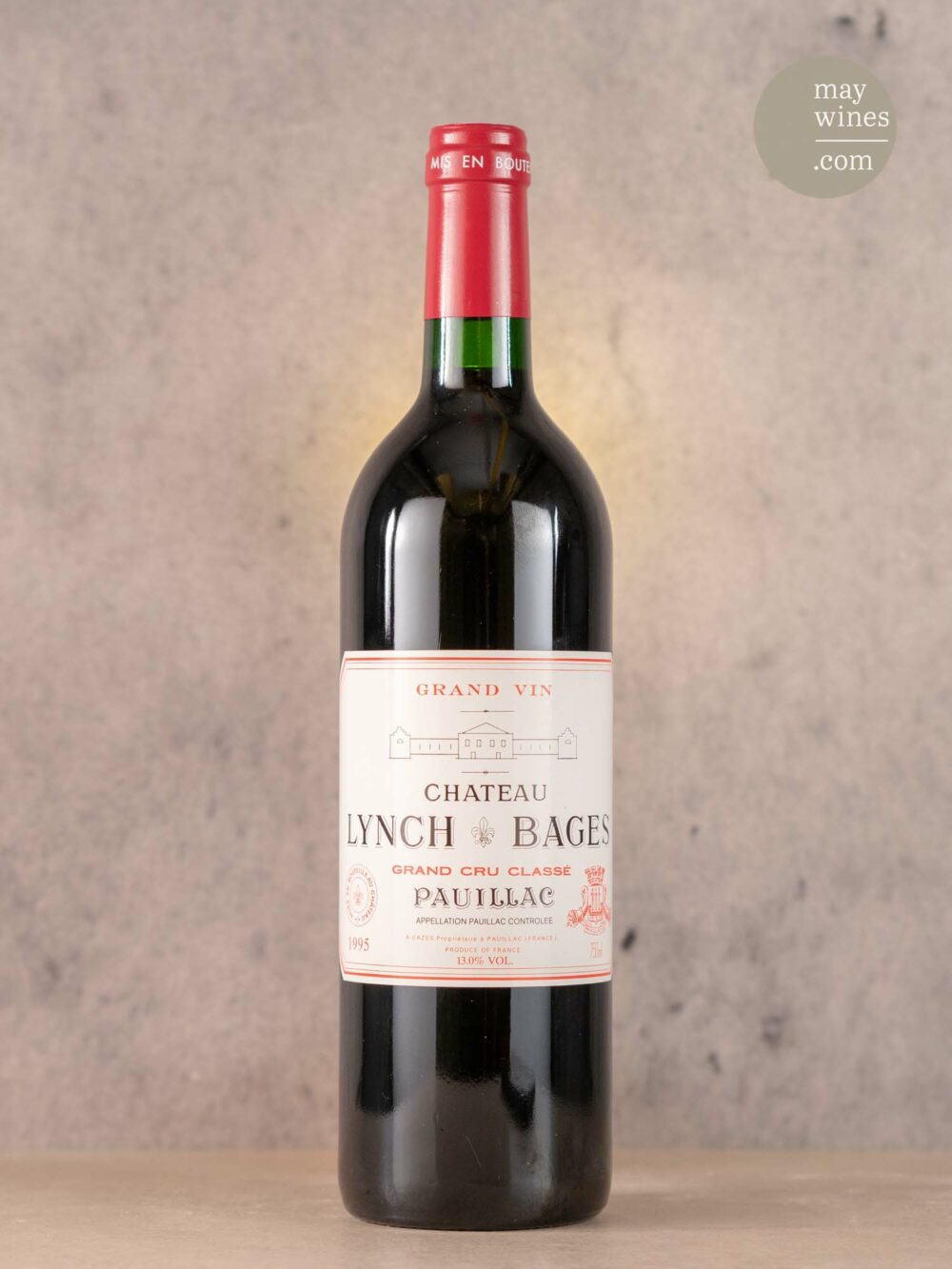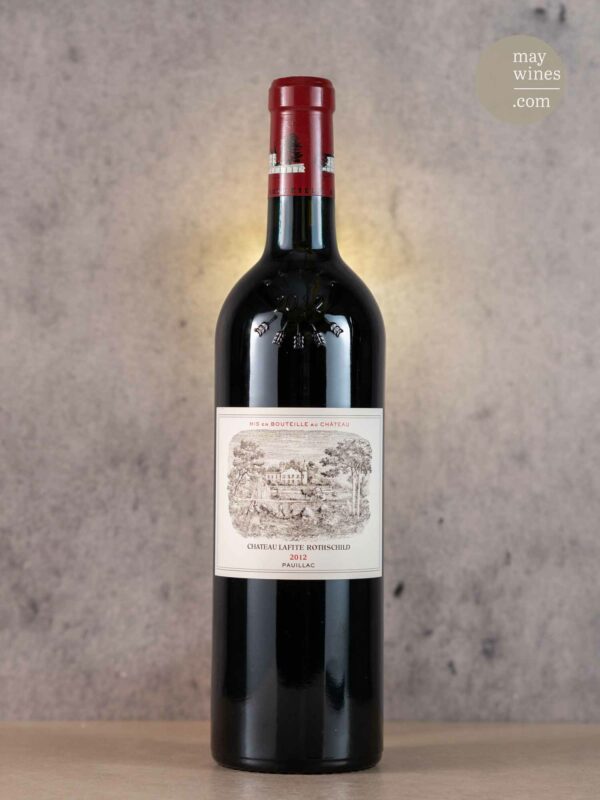Château Lynch Bages
Der Name AXA ist eng mit Lynch Bages verbunden. Aber nicht, weil AXA das Pauillac-Weingut gehören würde, sondern weil hier mehr oder weniger maßgeblich die Idee des Aufbaus eines Portfolios von Spitzen-Weingütern geboren wurde. Lynch-Bages Besitzer Jean-Michel Cazes war eng mit dem AXA-Präsident befreundet und konsultierte ihn bezüglich der „Kollektion“- Cazes, gab Lynch Bages aber nicht aus der Hand.
Das Haus hat großes Potential! 1855 zwar nur als eines von 18 Weingütern als 5ème Cru eingestuft (das wurde schon damals als zu niedrig angesehen), zählen die Weine von den 90 Hektar Rebflächen allerdings weltweit zu den gesuchtesten Weinen. Vielleicht strahlt auch der berühmte Nachbar Mouton-Rothschild ein wenig ab? Über 70 % sind hier, wie könnte es am linken Ufer anders sein, mit Cabernet Sauvignon bepflanzt. Auf 5 Hektar stehen übrigens weiße Sorten. Aufgrund drei Jahrhunderte unter englischer Krone findet sich auch hier in der Historie ein Brite: 1749 bis 1824 besaß der Ire Thomas Lynch Weingärten in der Gemeinde Bages. Nach qualitativ durchwachsenen Zeiten wurde es in den 1930ern schließlich von einem talentierten und erfolgreichen Weinmacher übernommen, es ging steil nach oben. Wer heute Bordeaux besucht kann auch im Weingut eigenen Hotel Cordeillan-Bages übernachten und auch sehr gut essen. Wer aber glaubt, dort die Château eigenen Weine zu vernünftigen Preisen genießen zu können, wird enttäuscht.
All wines from Château Lynch Bages
All vintages of Château Lynch Bages
Bordeaux
„Am Wasser liegend“ fiel den Römern zum heutigen Bordeaux ein und nannten das Gebiet deshalb „Aquitanien“. Seine Haupt- und Hafenstadt trägt den gleichen Namen wie das 100.000 Hektar große Weinbaugebiet von Weltruhm: Bordeaux oder auf französisch Bordelais. Vor und entlang der Gironde, welcher sich aus den Flüssen Dordogne und Garonne speist, liegen die weltbekannten Weinbaugebiete Médoc, Haut-Médoc, Graves und rechtsufrig die Orte St. Emilion und Pomerol. Unser Herz schlägt seit vielen Jahren für die feinen Weine des Bordelais, wir sammeln schon seit 20 Jahren diese Weine, kaufen regelmäßig Liebhaber-Keller auf und konzentrieren uns auf die für uns großen Jahre (unter anderem 1982, 1985, 1986, 1989, 1990, 1996, 1998, 2000, 2005, 2009, 2010 und einige mehr) und die Top Winzer. Weine, die uns nicht schmecken, bieten wir auch nicht an.
Denkt man als Weinliebhaber an Bordeaux, fällt einem unweigerlich Cabernet Sauvignon ein. Warum gelingt die Sorte dort so besonders gut? Das Klima auf der Halbinsel links der Gironde, Médoc, ist das mildeste in ganz Bordeaux und genau hier gedeihen Cabernet Sauvignon-basierte Cuvées von Weltrang. Die Sorte braucht genau diese Bedingungen, um es mit einiger Regelmäßigkeit zur Traubenreife zu schaffen. Die Kiefernwälder schützen die Weinberge gegen die starken Atlantikwinde und mäßigen zudem die Sommertemperaturen. Da es, so nahe am Meer viel regnet, baut das typische Château zur Risikominderung mindestens drei Rebsorten an: zu Cabernet Sauvignon gesellen sich üblicherweise Merlot und Cabernet Franc, gelegentlich auch die später reifenden Sorten Petit Verdot und Malbec. Voilà! Je nach Uferseite dominieren Cabernet Sauvignon die Cuvée (linkes Ufer) bzw. Merlot (rechtes Ufer). Freilich gibt es vereinzelt Ausnahmen, aber das wäre die grobe Unterscheidung der zwei berühmtesten Ufer der Weinwelt.
All wines from Left Bank
Pauillac
Ihr Puls steigt, wenn Sie schwarze Johannisbeeren, Zedernholz, Zigarrenkiste und feuchter Waldboden hören? Dann ist Ihr Kenner-Gaumen vermutlich auf Pauillac eingetrunken. Willkommen im Cabernet Sauvignon Paradies! Der britische Weinkritiker Hugh Johnson sagte: „If one had to single out one commune of Bordeaux to head the list, there would be no argument. It would be Pauillac.” Gleich drei der fünf weltberühmten Premiers Crus beherbergt die 1.200 Hektar große AC: Lafite, Latour und Mouton-Rothschild. Lafite und Mouton teilen sich übrigens Weingärten am höchsten Plateau von Le Pouyalet, ganze 30 Meter hoch. Pauillac ist aber auch die Herkunft einer Menge weiterer interessanter Weingüter: 2ème crus Pichon-Comtesse, Pichon-Baron, 4ème cru Duhart-Milon, 5ème crus Pontet-Canet und Lynch-Bages, um nur einige zu nennen. Cabernet Sauvignon dominiert die hocheleganten Cuvées. Tiefgründiger Kies lässt Wasser auf der fast unmerklich welligen Topographie perfekt drainagieren, und das lässt die Rebsorte zu Weltweinen gedeihen.
All wines from Pauillac



